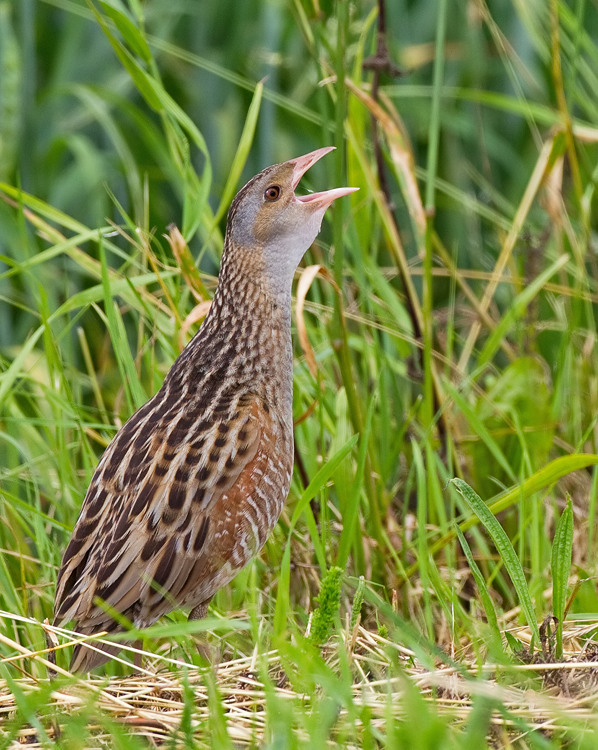Scottish Corncrake population declines by a fifth
One of Scotland's rarest breeding birds, Corncrake, has suffered a poor season in 2015, numbers dropping by almost a fifth.
In an annual RSPB Scotland survey, the number of calling males recorded fell by 17 per cent compared to last year, with only 1,069 being counted. In 2014, there were 1,289 calling males counted — this in itself the highest total recorded for at least 45 years.
Corncrake is an elusive migratory species, breeding in Scotland over the spring and summer and migrating south to spend the winter in Africa. They are found in only a few isolated parts of the country, primarily on islands.
Tiree currently held the most Corncrakes in 2015, with 333 calling males counted. Almost all areas in which the species is found witnessed a drop in numbers this summer, except for a few areas — Islay and Iona, for example, both exhibited a slight increase, while Mull stayed the same.
Corncrakes also suffered a decline in Scotland back in 2013, when a 23 per cent drop was noted when compared with the previous year. It is thought that the exceptionally cold, late springs in 2013 and 2015 is the primary reason behind the reduction in the number of males calling.

Corncrake, Netherlands (Photo: Paul Cools)
Corncrakes are naturally short-lived birds, most wild birds living for just two years. However, given good habitat and conditions, they can breed fast and populations quickly recover. Most of the calling males recorded this year will have hatched in Scotland last year. After flying back from Africa, many will call from and breed in the same field they were born in.
If habitat conditions are not suitable for the species, they can quickly disappear from an area. As they rarely colonise new areas, losing Corncrakes from a particular region provides a major challenge to conservation efforts that aim to encourage re-colonisation.
Despite these recent fluctuations and difficulties, Corncrakes have recovered hugely since the early 1990s. At that time the species — which, in the 19th century, was common right across Scotland, England, Wales and Ireland — had dwindled to just 400 calling males. These were almost entirely restricted to a few Scottish islands. Research by RSPB Scotland identified changing agricultural activities, especially a shift to earlier mowing of hay meadows and silage fields, as the main cause of the declines.
In 1991, a conservation programme started, together with the Scottish Government and Scottish Natural Heritage (SNH), to design Corncrake management options and, critically, with farmers and crofters to actually deliver the habitats these birds need. This programme has become an internationally famous example of cooperative conservation for farmland wildlife.
Paul Walton, Head of Habitat and Species for RSPB Scotland, said: "The Corncrake has recovered well since the early 1990s, and that's thanks to agricultural communities on the islands. But now that recovery has slowed and numbers are fluctuating, we think in response to cold spring weather. This species remains a huge conservation priority in Scotland. We must remember that the Corncrake remains highly localised: though numbers have increased, the conservation programme has not yet succeeded in spreading the population further than its low point in 1991. It is difficult to fund crofters to deliver land management in areas where Corncrakes are currently absent — but that's the only way to start increasing the birds' range, the vital next step towards a robust and secure national population."
| Location | Number of calling males in 2014 | Number of calling males in 2015 |
|---|---|---|
| Isle of Coll | 91 | 78 |
| Isle of Tiree | 396 | 333 |
| Isle of Mull | 3 | 3 |
| Islay | 98 | 102 |
| Orkney | 36 | 16 |
| Mainland — West Highlands | 11 | 8 |
| Isle of Skye | 38 | 32 |
| Lewis and Harris | 150 | 106 |
| Berneray, The Uists, Barra, Vatersay | 345 | 296 |
| Colonsay and Oronsay | 86 | 55 |
| Iona | 28 | 32 |
| Argyll mainland | 0 | 1 |
| Treshnish | 2 | 1 |
| Mingulay, Sandray, Berneray | 4 | 6 |

